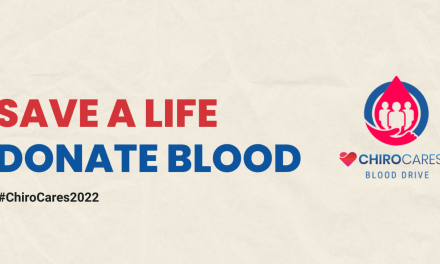
Top 10 Ways to Grow Your Pediatric Practice

Updated September 2017
More parents than ever are looking for natural solutions to keep their children healthy. With the increased awareness of youth opioid and prescription drug addictions, now is the time to encourage the use of chiropractic as a better alternative. Parents will drive hours per week to sports, art classes, etc and they will drive to you for your special focus on pediatric chiropractic care. Here are the top 10 tips on how to develop the pediatric end of your practice and ignite the next generation for natural health!
1. Make your environment fun!
Look around your office and see it from a child’s perspective. Do you have a welcoming, clean kids’ area with updated books, educational toys, child-sized seating and/or activity stations? Is your area child safe with outlets covered and heavy furniture bolted to the walls? Do your bathrooms contain a step stool, baby changing table, and supplies, if needed? Does your adjusting space contain child-friendly pictures or a kid’s sized adjustment table? You might consider researching designs for a pediatric dental office to get ideas that might translate to the chiropractic office.
2. Routine is key!
Have you noticed how children can watch the same cartoon over and over again without boredom? Kids love routine! It is helpful to observe or create a routine for your pediatric patients. One idea is having a sticker station where the child can stop after his or her adjustment – try keeping it close to your front desk where a staff member or Doctor can help the child pick one out. Other routines might be dimming the light or closing the door for sensitive children, letting them hold a favorite toy during the exam, lining trains up on the table, making a basket with face paper, or giving them time to play in the kids’ area as they await a room to be available.
3. Pediatric focused exam
You will need to brush up on your pediatric tests, x-ray techniques and reflex tests, as well as purchase kids’-sized exam tools. Have child sized gowns with fun prints, even if just to lay on the table when checking a newborn. Also, use safety with equipment, and turn off elevation or hi-low tables when a child is in the room. It is advisable to always have parents in the room during the exam, with the exception of during x-rays. As mandated reporters of abuse, chiropractic physicians should remember to look for any signs of excessive bruising or injuries that cannot be explained. Even if you have a slight inclination to suspect abuse, it is advisable to make a report to DCFS and document your report in the patient file. Also, make sure to have a parent’s consent and informed consent reviewed and signed by the parent/parents prior to treatment. In a joint custody situation, you will need a signed consent from both parents.
4. Schedule to Excel
Your staff will get to know which of your littlest patients may need extra time with you. For a special needs child, or a sensitive child or a newborn, time can be blocked out at your slower times, such as after the morning patients or during late afternoon before the evening patients. Patience is needed for these times, and a reminder that the greatest rewards come with helping these cases as you help a child and the entire family. You may need a staff member to help with distracting a fussy baby during an adjustment or holding a little one as siblings get adjusted. The entire chiropractic team needs to be on board as you expand your practice. There are millions of children that need our profession’s help, and the mission and purpose will be important for your staff to grasp.
5. Educate the whole family
When working with families new to chiropractic care, they must undertake a new way of thinking about health, as compared to traditional medicine. Educate your families on the nervous system, the subluxation complex, and research related to pediatric chiropractic. You can also have a cartoon New Patient video to explain chiropractic or have a model spine to show parents what happens in the body. The Report of Findings is the perfect time to provide a written pediatric report folder with information and written recommendations to review with both parents.
6. Communicating in the Community
As you start to grow the pediatric end of your practice, you will need to change some of your marketing procedures. Your marketing team can attend school health fairs, community events, fundraising events, and parenting group meetings. You can hold educational talks for parents or a sports night for teams you sponsor. If you have a booth, you might have a bags game with your logo, spin the wheel game, tattoos or other giveaways. It is helpful to have a screening tool such as a Myovision or Subluxation Station with a computer or TV monitor to have a visual for parents.[1] Above all else, smile and have fun with your team at events. Wear matching colorful office shirts, have music playing, laugh, be personable. You can also host a community event to support healthy kids with a bounce house, fire truck, food, raffles, health screenings, etc. This would be great to cross-market with other health care providers.
[1] Note that any delegation of patient care tasks or duties to unlicensed assistants must comply with all Medical Practice Act requirements. See ICS FAQ regarding off-site screenings here.
7. Photo Opportunities
It is fun to have an office mascot for community and internal events. You can find a costume online and have an office jersey made for the mascot. The children love seeing your mascot out and about, and a mascot is a great tool for advertising on social media. Update your website and Facebook page to show that you are working with kids in your practice. People love seeing pictures of the fun things you will do in the community. You might even have special days in your practice where the staff and mascot dress up for a theme such as a super hero day, holidays, or special national days. You can provide food and games to match the theme with a focus on scheduling new patients.
8. Connection Education
Sometimes the best way to educate the community on pediatric chiropractic is by personal connections. You may join your children’s PTA or volunteer at a local civic or chamber group. Parenting support groups or Facebook groups may be another source of connections. Networking with other providers such as pediatricians, midwives, OT/PT, OBs, MDs and school nurses is necessary to provide a team approach to health. You may consider supporting charities that help families in your community or sponsoring a toy drive at Christmas.
9. Continue your Education
The most important piece to expanding your pediatric practice is you. Your confidence in working with children starts with not only practice, but with further training. The ICA pediatrics council, ICPA, ICS, ACA and other organizations provide CE credits in pediatricchiropractic. Our profession has a 3-year post-graduate Diplomate in Pediatric degree you can pursue to really focus your specialty.
10. Know what you don’t know!
The chiropractic profession offers specialty degrees in many different areas, one being pediatrics. If you are not comfortable working with children or have a difficult case, please contact a Pediatric Diplomate in your area. We all share a common goal of helping children, and we can work together to impact future generations with natural Chiropractic!

















